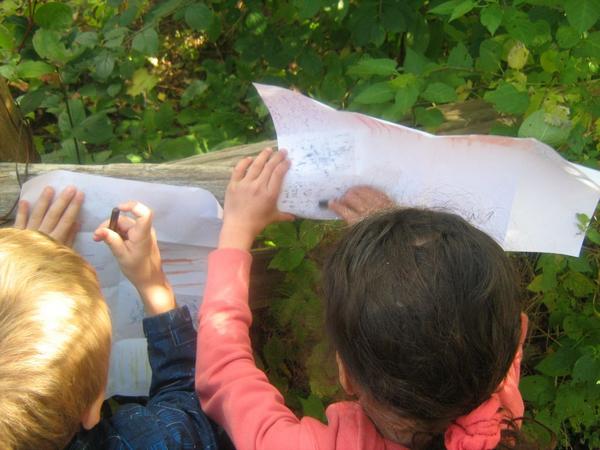Possible Framing Questions
How can nature teach us to make art that has texture and contrast?
What colours and textures can be found in nature?
Learning Goal
If students use their senses to explore nature at Forest Valley, then they will be inspired to produce artwork using texture and contrast.
Curriculum Connections
The Ontario Curriculum Grades 1-8: The Arts (pg. 72)
ELEMENTS OF DESIGN Students will develop understanding of all elements of design.
- texture: textures of familiar objects (e.g., fuzzy, prickly, bumpy, smooth); changes in texture; a pattern of lines to show texture (e.g., the texture of a snake’s skin); transfer of texture (e.g., placing a piece of paper over a textured surface and then rubbing the paper with wax crayon)
- colour: mixing of primary colours (red, yellow, blue); identification of warm (e.g., red, orange) and cool (e.g., blue, green) colours
Possible Sequence of Day
The framing question focuses the learning of the day. The day starts with an engagement activity to assess understanding, engage the students, and introduce the framing question. The morning is spent doing investigations, exploring and conducting hands-on inquiry in regards to natural textures, colours and contrast in nature. The afternoon application activity is focused on consolidating and then conducting a hands-on student learning experience (e.g. creating 3 dimensional textured nature art out of natural materials or bark rubbings of various natural textures).
Pre and Post Activities

"Look at the bumps! It looks like bark."